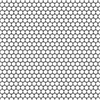Filter by
Thickness
Material
Steel Grade
Tolerance Rating
Hardness Rating
Hardness
Yield Strength
Specifications Met
Mechanical Finish
Certificate Type
Heat Treatment
DFARS Specialty Metals
Export Control Classification Number (ECCN)
Elongation
Maximum Hardness After Heat Treatment
Raw Materials
Fastening and Joining
Fluid Handling
Building and Machinery Hardware
Containers, Storage, and Furniture
Facility and Grounds Maintenance

































